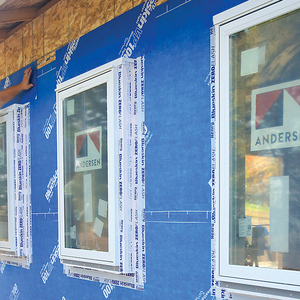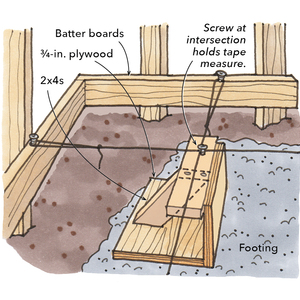I have several wood frame windows with rotting sills that I need to replace. The house has stucco siding. This will be a hateful job, because the stucco looks like it slightly encases the wooden frame windows on all sides by about 1/4″ to 3/8″. In other words, the windows are recessed from the plane of the exterior wall and the stucco overlaps the window frames and sill a little bit.
It seems to me that I cannot remove the windows without major surgery on the stucco. Can anyone offer any how-to advice/tricks/tips/shortcuts? If this has been discussed before, please lead me to that thread.
Thanks



















Replies
I only know two ways to go on this. One is cut out around the window with an angle grinder, replace the window, and re-stucco. Yes, it's messy and expensive, but it's not hard to do.
The other does not involve breaking the stucco. I've only done this on double-hung windows, so I don't know if this will work for you. If so, treat the rotted sills with wood hardener and bondo, repaint, and replace the window with jamb liners. These are vinyl tracks that screw right to the existing jambs, and new double-hung windows pop into the tracks. Eagle and Weathershield make them, maybe someone else does too, I don't know.
DRC
Hey Dr C, that bondo idea sounds brilliant, that's what I'll try first.
BUT you mentioned using "wood hardener". What is that?????
Thanks,
Tom
Tom,
The "wood hardener" is a runny resin that soaks into porous/punky wood, and then hardens inside the wood to restore strength prior to puttying. If you use Bondo, which is a polyester-based putty, use a polyester resin consolidant (wood hardener). If you use an epoxy putty, use an epoxy consolidant. The two systems of chemistry are incompatible.
Bugle
The wood hardener is as Buglehead said, the only thing I would add to his post is that if you use this stuff you need to wear adequate safety gear. That means goggles and liquid-proof gloves at the minimum. You do NOT want this stuff on your skin. It penetrates rotten wood and turns it hard, so your liver will not like it a bit. <G>
I've probably used about a gallon of it on one particular restoration project, and it has saved countless hours of otherwise difficult reconstruction on this job alone (including window sills). I can't imagine how much money this stuff has saved clients over the years. Once you paint the Bondo, you can't tell the difference from wood. We used it all the time in the cabinet shop to fix screw-ups.
As for the stucco, I've cut the stucco out with a die grinder, nailed the new lathe into place, painted the cut with bonding adhesive, feathered back the patch, and had no problem with cracks. Done three houses this way, not one crack. I think any of the fiber reinforced products are good for this, I've had good luck with them anyway.
Let us know how it turns out, eh?
DRC
Tomc5,
You can cut the stucco with a diamond blade, but the patching in will tend to fail at the kerf line. If you remove several inches with a blade, the wire is also gone. You will need that wire to unify the repair stucco with the esisting stuff. I do this by breaking away the stucco by impact, which saves the wire for reuse. By this I mean the wire remains unbroken, hanging out of the stucco surrounding your project. The broken surface of the old stucco also provides a good mechanical key for the repair stucco.
Breaking the stucco can be done with many hammer blows by hand, with a light chipping hammer like the Bosch Bulldog SDS hammer, or with an air hammer powered by a compressor. The air hammer is easiest and fastest, and a cheap tool costing $20 will do fine. Wear full eye, ear, hand, and lung protection. I just did one this week.
Bugle
I had a lot of fun (HUGE amount of sarcasm there!) doing just this starting last year.
We have a stucco house with wood windows that were all (poorly) clad in aluminum some time in the past. In hanging our awnings up last spring I realized that the screws were held in place by the aluminum. Everything else behind it was sponge.
So...demo time.
One window has a sill that was completely gone. That entire window had to be torn out.
It was replaced with an (overpriced) pair of marvin double hungs. to fit it into the stucco, we ordered them sans brick moulding and left around a 1/2" gap on all sides to shim. This worked well, as we could then mill the backs of the brick moulding to fit the profiled stucco.
Lots of caulk, weather seal tape and a drip edge seemed to have survived the first winter.
The other windows has spongy sills, but thanks to the advice on this board, the epoxy route was enough to save them (at least until I sell the house). I stripped all of the sills of paint, drilled 1/8" holes everywhere, and then used marine epoxy called 'git-rot'. The wood hardener, from what I understand, it just a surface hardnener, while git-rot, with the pre-drilling, will completely soak into the wood for a much stronger result.
I did that, repainted, and pulled off and replaced the brick moulding and the odd rotted piece I could pull out and replace. So far so good. Have one more main window to do this spring and then resintall storms.
Then maybe I'll have the guts to peak under the alum-cladding on the windows on the other side of the house.